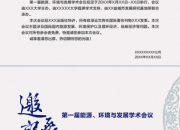南京财经大学考研基础英语试题
时间:2021-08-31南京财经大学考研基础英语试题
TEXT D
In a breath-taking turn of events, Asia's economies have gone from miracle to meltdown in a matter of weeks. Many forecasters who recently predicted GDP growth of 6% in South Korea and southeast Asia for 1998 are suddenly projecting zero or even negative growth. In the often short-sighted world of international finance, a new conventional wisdom is quickly forming: that inept policy-making is dragging down Asian economies, and that only the tough austerity medicine of the International Monetary Fund, plus a good stiff recession, will bring the region’s economies back to track.
In recent years, foreign and domestic investors in East Asia got a touch of what U.S. Federal Reserve Chairman Alan Greenspan has famously termed irrational exuberance. Spurred by years of high economic growth in Asia, these investors poured billions of dollars of loans into the region, financing many worthwhile investments but also an unsustainable real estate boom.
This over-investment need not have caused a crisis. A healthy reaction would have involved a gradual cutback in foreign lending, a gradual weakening of Asia's overvalued currencies and gradual shift of investments from over-inflated property sectors back to longterm export-oriented projects. Most short-term booms are brought down to earth without extreme crisis, and such an adjustment was the most likely scenario until the summer in 1997.
In the event, Asia experienced a financial meltdown. A gradual withdrawal of funds from Thailand suddenly became a stampede. Thailand's government dallied in responding to the overheating long after it had become apparent, and as a result squandered Thailand’s foreign exchange reserves in a misguided attempt to defend the overvalued baht. The stampede came when foreign creditors realized that Thailand had more short-term foreign debts than the remaining short-term foreign reserves. A rational panic began. Each investor started to sump assets simply to get out of Thailand ahead of other investors. Panic in Thailand soon took a toll on the economies of its neighbors. The chain reaction of nervous withdrawal led to a meltdown that now includes most of East Asia.
Confidence has been so drained that Asia's positive fundamentals ? historically high rates of growth, savings and exports ? are being overlooked. Economies rely on confidence, and what they most need to fear is, indeed, to fear itself.
16. What is the most appropriate title for this passage?
A The Nervous Action of Market Economy
B A Vicious Circle Is At Work
C The Asian Miracle Takes Some Hits
D The Prophesies of Financial Doom
17. The word meltdown in Paragraph 1, sentence 1 is closest in analogy to ______.
A the radioactive core of a nuclear power
B a controlled nuclear reaction
C nuclear energy slipping out of control and ending up in a full-blown disaster
D the breakdown of the cooling system
18. According to the author, in normal cases, over-investment ________.
A can be reduced by a quick slash in foreign lending
B does not necessarily lead to a critical stage
C may be solved by an abrupt depreciation of currencies
D should be shifted to boom-town real estate speculations
19. The chain reaction of investment withdrawals from the East Asian countries can best be said as _________.
A irrational exuberance
B long-term adjustment
C market economy under siege
D contagion effect
20. According to the passage, what is supposed to be the key link to the economic recovery in East Asia?
A To attract more foreign fund.
B To boost the exports.
C To stop dumping assets.
D To regain confidence.
VI. Translation the English into Chinese. (20 points)
What is your recovery rate? How long does it take you to recover from actions and behaviors that upset you? Minutes? Hours? Days? Weeks? The longer it takes you to recover, the more influence that incident has on your actions, and the less able you are to perform to your personal best. In a nutshell, the longer it takes you to recover, the weaker you are and the poorer your performance
You are well aware that you need to exercise to keep the body fit and, no doubt, accept that a reasonable measure of health is the speed in which your heart and respiratory system recovers after exercise. Likewise the faster you let go of an issue that upsets you, the faster you return to an equilibrium, the healthier you will be. The best example of this behavior is found with professional sportspeople. They know that the faster they can forget an incident or missed opportunity and get on with the game, the better their performance. In fact, most measure the time it takes them to overcome and forget an incident in a game and most reckon a recovery rate of 30 seconds is too long!
VII. Translation the Chinese into English. (20 points)
远程教育属正规教育,它打破了传统的.课堂教学模式。远程教育与传统教育相比有两大区别, 即远程教育具有灵活性和开放性,不受时空和学习进度的限制。
教师在一处授课,而学生在另一处学习,打破了时空限制。有些学生由于工作、家庭或是地理条件的限制等原因无法接受传统教育,而远程教育可以为他们提供受教育的机会。学生学习的地点可以是配有通信设备的校园、工作单位或者自己家里。授课可以实时或非实时进行。师生交互以及生生交互可以融入到教学过程中去。
VIII. Writing. (30 points)
Directions: Write a composition of about 400 words on the following statement.
A company has announced that it wishes to build a large factory near your community. Discuss the advantages and disadvantages of this new influence on your community. Do you support or oppose the factory? Explain your position.
【南京财经大学考研基础英语试题】相关文章:
2.考研基础英语试题
3.考研英语试题
6.考研英语试题联系
7.考研英语试题特点











